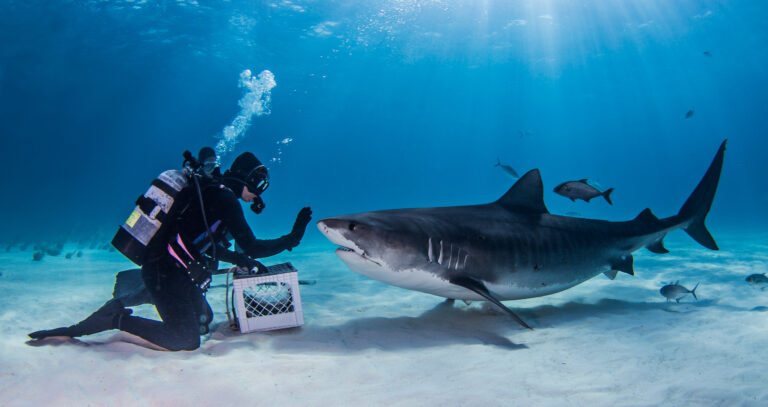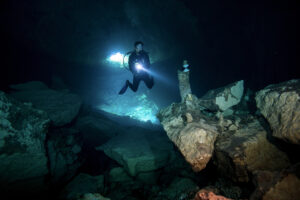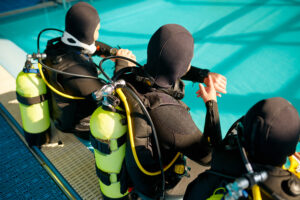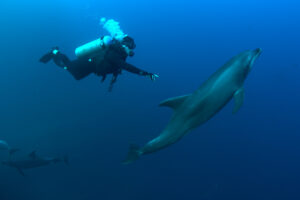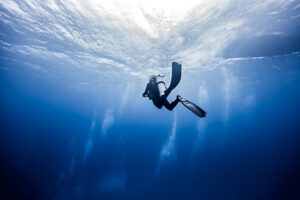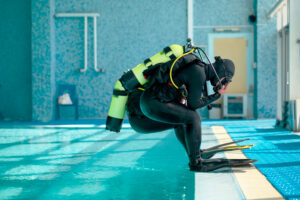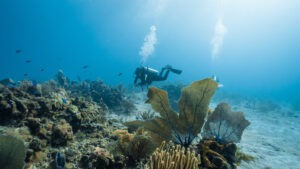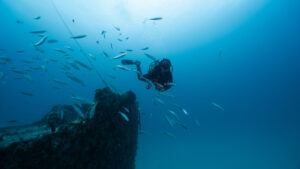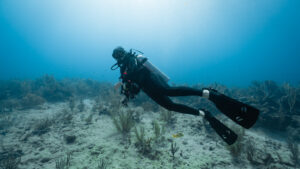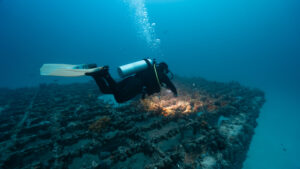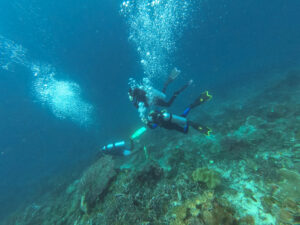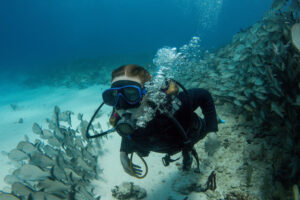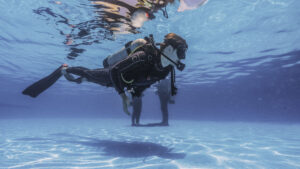What is Kayak Diving?
Kayak diving is a unique and adventurous form of recreational scuba diving that combines the sports of kayaking and scuba diving. In kayak diving, divers use specially designed kayaks to access dive sites that are too far from shore for convenient shore diving. This method of diving allows divers to explore remote and often less-visited underwater environments, providing them with a more exclusive and immersive experience. Kayak diving is an excellent way for scuba divers to improve their navigational skills, build upper body strength, and experience the thrill of exploring new dive sites.
History
The origins of kayak diving can be traced back to the early 20th century when kayaks were initially used by native Inuit people for hunting and fishing in Arctic waters. Over time, kayaks were adapted for various purposes, including sea kayaking, which eventually led to the emergence of kayak diving. In the late 20th century, scuba divers began to recognize the potential advantages of using kayaks to access offshore dive sites, and kayak diving slowly gained popularity among the diving community.
Equipment and Kayak Types
To successfully engage in kayak diving, divers need a combination of both scuba diving and kayaking equipment. Standard scuba diving gear includes a mask, snorkel, fins, wetsuit or drysuit, buoyancy control device (BCD), regulator, and dive computer. In addition to this basic gear, divers must also have a kayak specifically designed for diving purposes.
Dive kayaks are available in various styles and designs, with the most common types being sit-on-top (SOT) kayaks and sit-inside kayaks. SOT kayaks are favored by many kayak divers due to their increased stability, ease of entry and exit, and self-draining scupper holes. Sit-inside kayaks provide more protection from the elements and can offer better maneuverability, but may be less convenient for mounting and dismounting dive gear.
Many dive kayaks come equipped with features tailored to the needs of scuba divers, such as tank wells, gear storage compartments, and attachment points for dive flags, lights, and other accessories. Paddles, life vests or personal flotation devices (PFDs), and navigation tools like compasses and GPS devices are also essential kayaking equipment.
Preparation and Planning
Successful kayak diving requires thorough preparation and planning. Divers must research potential dive sites, taking into consideration factors such as water conditions, tides, currents, marine life, and accessibility. Divers should also ensure that they have the necessary permissions and permits to access the chosen dive site.
Before embarking on a kayak dive, divers should ensure that their equipment is in good working order and familiarize themselves with the specific features and handling characteristics of their dive kayak. It is essential to practice efficient packing and stowing of dive gear to maintain stability and minimize drag while paddling. A well-balanced kayak will improve maneuverability and reduce the risk of capsizing.
Safety Considerations
Safety is paramount in any form of scuba diving, and kayak diving is no exception. Divers should always follow the buddy system and ensure that both they and their dive buddy are experienced in both scuba diving and kayaking. Adequate surface signaling devices, such as dive flags, whistles, and strobe lights, should be employed to alert boat traffic to the presence of divers.
Divers should also be aware of the risks associated with entanglement in kelp or fishing lines and should carry a cutting tool for emergencies. To avoid decompression sickness, divers should follow safe ascent and descent procedures and monitor their dive profiles closely.
Environmental Considerations
As with any form of diving, it is crucial for kayak divers to adhere to responsible environmental practices. Divers should avoid contact with fragile marine life and habitats, such as coral reefs and underwater caves, to minimize potential damage. It is essential to practice good buoyancy control to avoid disturbing the delicate underwater ecosystems.
When approaching a dive site, kayak divers should also be mindful of nesting birds and other wildlife that may be present onshore or in the water. It is essential to maintain a respectful distance and avoid disturbing their natural behavior.
Dive Site Selection and Exploration
One of the significant advantages of kayak diving is the ability to explore remote and less frequently visited dive sites. This can lead to incredible underwater discoveries, such as pristine coral reefs, shipwrecks, and other submerged artifacts. When selecting a dive site, kayak divers should consider the potential for unique and exciting underwater encounters while taking into account the skill level and experience of all participants.
Once a suitable dive site is identified, the divers can use their kayaks to navigate to the location, either by paddling or towing the kayak while swimming on the surface. This approach enables divers to conserve energy and air supply for the dive itself. Upon reaching the dive site, the kayak can serve as a surface support platform, providing a stable area for divers to gear up and conduct safety checks.
Dive Execution and Techniques
When executing a kayak dive, divers should follow a systematic process to ensure safety and efficiency. This process begins with a thorough pre-dive briefing, discussing the dive plan, safety procedures, and any relevant environmental factors. After completing the pre-dive checks, divers can enter the water from the kayak, either by rolling off the side or conducting a controlled seated entry.
Once in the water, divers should secure their kayaks using an anchor, float, or tether, ensuring that the kayak remains stationary and easily accessible during the dive. Kayak divers typically follow a dive plan that includes a descent line, a predetermined underwater route, and an ascent line, allowing for a controlled and safe dive experience.
Post-Dive and Kayak Recovery
After completing the dive, divers should follow proper ascent procedures and return to their kayaks. Upon reaching the surface, divers can use the kayak for support while removing their scuba gear and stowing it securely. When all divers have safely exited the water and secured their gear, they can paddle back to the shore or the starting point.
Key Takeaways
Kayak diving offers a unique and exhilarating way for scuba divers to explore the underwater world. By combining the skills and techniques of both kayaking and diving, kayak divers can access remote and seldom-visited dive sites, providing them with unparalleled underwater experiences. With proper planning, training, and a focus on safety and environmental responsibility, kayak diving can be an exciting and rewarding addition to any diver’s repertoire.

